Sun Unleashes Powerful Solar Flare That Produces Aurora Visible In USA
This is the moment the Sun unleashes a powerful solar flare that produces an aurora visible in parts of the USA.
The footage was shared on social media by the National Oceanic and Atmospheric Administration (NOAA) on 4th November.
The National Environmental Satellite, Data, and Information Service, created by NOAA to operate and manage the US environmental satellite programs, said in a statement: “On Oct. 28, 2021, NOAA’s GOES East satellite observed a strong solar flare with its Solar Ultraviolet Imager (SUVI) at 11.35 am ET.
“The flare produced aurora (northern lights) that were visible across Canada and as far south as Pennsylvania, Iowa, and Oregon.”
Solar flares are explosive outbursts on the Sun that generate intense radiation in the form of X-rays and energetic particles that can sometimes affect our planet.
As this radiation often travels at or near the speed of light, it can reach the Earth within about eight minutes.
Solar flares are linked to eruptions, called coronal mass ejections (CMEs), which send huge clouds of magnetised plasma into space, ploughing through the continuous flow of charged particles that normally stream from the Sun, known as solar wind, and can reach the Earth in up to three days.
The Earth has a magnetic field that deflects most of the harmful radiation. The Sun, which is made of electrified gases called plasma, also generates its own magnetic field, and all solar activity is driven by these magnetic fields.
The National Environmental Satellite, Data, and Information Service said: “We can see manifestations of the Sun's magnetic field in the form of active regions, which appear at the Sun’s surface as cooler, dark areas, and in SUVI observations of the Sun’s corona as bright concentrations of loops.
“Active regions mark areas where magnetism is the strongest. Strong solar flares are powered by the energy stored in the magnetic fields of these active regions.
“Sunspots are used as an indicator of solar activity, and the number and location of sunspots is used to track the Sun's overall activity. Although the Sun may look like a constant ball of light every day, it actually goes through a cycle of increasing and decreasing activity that lasts around 11 years.
“Researchers determined that the solar minimum occurred in Dec. of 2019, meaning the Sun’s activity is beginning to ramp up and should peak around 2025, increasing the chance for stronger solar storms in the coming years. Afterward, geomagnetic activity will begin to decrease again and a new cycle will begin.”
Increased radiation and geomagnetic storms can potentially affect power grids, radio signals, and communications systems on Earth.
They can also affect satellite operations and GPS navigation capabilities.
The organisation said: “NOAA satellites help monitor the activity of the Sun and when solar flares, or coronal mass ejections occur. Since these events can happen unpredictably and some can reach Earth within minutes, NOAA's Space Weather Prediction Center uses this information to monitor the activity on the Sun and makes forecasts, predictions, and alerts.
“As the solar cycle moves toward the solar maximum, NOAA satellites will continue to monitor the Sun’s activity.”
NOAA, NASA, CIRA, SUVI, CIRES, CIMSS/NF/Lee Bullen
-
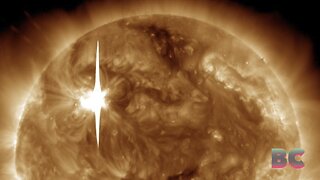 1:37
1:37
B.C. Begley
3 months agoSun bursts with largest solar flare since 2017
400 -
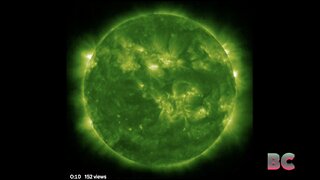 2:07
2:07
B.C. Begley
1 year agoSun Unleashes Most Powerful Solar Flare In Five Years
112 -
 0:59
0:59
B.C. Begley
11 months agoSun unleashes giant X-flare in outburst that could spark auroras on Mars
35 -
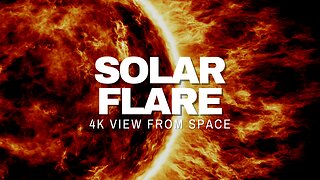 1:24
1:24
Welcome 2 future
1 year agoSolar Flares: A Spectacular Display of the Sun's Explosive Power
30 -
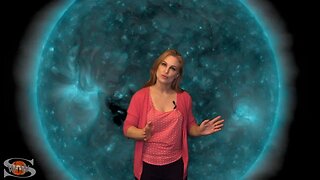 7:51
7:51
Dr. Tamitha Skov
5 years agoNew Chance for Aurora Even as Brightness Dims: Solar Storm Forecast 08-09-2018
33 -
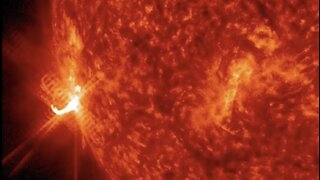 1:28
1:28
B.C. Begley
1 year agoSun Unleashes Intense X-Class Solar Flare, With More Expected
64 -
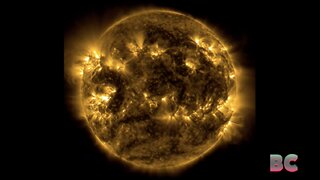 1:45
1:45
B.C. Begley
1 year agoNASA Captures the Sun Coughing Out a Thrilling X-Class Solar Flare
455 -
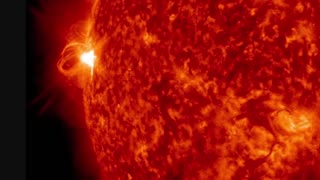 1:29
1:29
RickLangley
5 months agoMAJOR X-CLASS 5 SOLAR FLARE
514 -
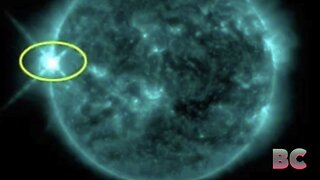 1:59
1:59
B.C. Begley
5 months ago‘Strongest’ solar flare since 2017 detected
88 -
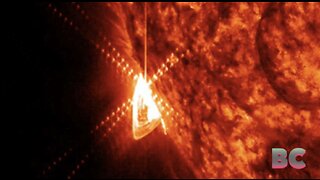 1:25
1:25
B.C. Begley
1 year agoPowerful solar flare erupts from hidden sunspot sparking widespread radio blackouts
51